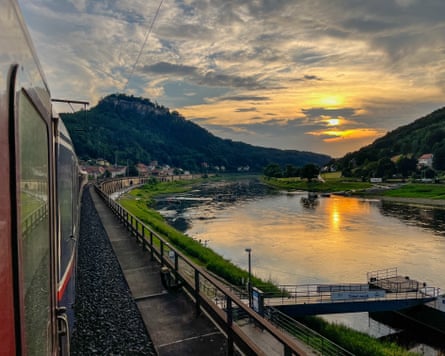As Europeans woke up to the joy of travel post-lockdown, it looked as though we were in store for a resurgence of continent-crossing night trains. Sleeper train fans hailed a “night train renaissance” and a “rail revolution”, combining some of the nostalgia for an old way of travelling with modern climate and sustainable transport concerns.
The long-distance European train journey might be slower than a short-haul flight, but it is surely better in terms of the environment and the traveller experience. For those on a budget, the prospect of saving on a night in a hotel appeals too.
But as anyone who has tried to plan a holiday train trip for this summer is likely to have found, night trains are still few and far between, especially in western Europe. And if there is a night train at all on a route, it will often be booked up months in advance. That’s not all: reliability and onboard service are often not up to scratch, with carriages on many routes pushing 50 years old.
The traditional behemoths of European rail – France’s SNCF, Germany’s Deutsche Bahn and Spain’s Renfe – have little or no interest in the night-train market, preferring more profitable high-speed daytime trains instead. Only Austria’s ÖBB has bucked the trend, ordering a fleet of 33 new trains for its Nightjet service. For comparison, Deutsche Bahn owns almost 300 high-speed daytime trains. Night services remain a drop in the ocean.
Now Nox, a Berlin-based private startup, has announced plans it claims will change all that and blow open the night-train market with a radical rethink of the passenger experience. No more old or secondhand carriages; Nox says it intends to build a new fleet. No more asking travellers to share with snoring strangers in couchettes either: the fleet will have only one- and two-person compartments, albeit rather small ones. Pilot services are due to start in 2027 and regular operations by the end of the decade.
This approach on the key question is right – the only way to offer more night-train routes is to build new trains. But Nox will not be the first newcomer to try to crack this market. Midnight Trains, a Paris-based startup, promised hotels on wheels in 2021, but investors were not convinced and the venture folded. Dutch operation GoVolta has been unable to turn a successful air-package travel business into the equivalent on rail. European Sleeper, which also launched in 2021, has done a little better – its motley collection of elderly carriages runs three times a week from Brussels via Amsterdam and Berlin to Prague, but without new carriages the company will remain tiny.

While Nox, like its predecessors, faces an uphill struggle, in a few ways it is different. Its plan to rethink the layout of a night-train carriage, making it more appealing to modern travellers – and safer for women – makes sense. Standardisation - all the carriages will be the same - keeps operations simple. One of the founders previously worked for FlixBus’s rail arm, FlixTrain, in Germany, so there is genuine railway experience. Either way, UK passengers should not hold their breath – night trains through the Channel Tunnel are not on the cards, being operationally too difficult to even contemplate.
Efforts by any private operator to solve the night-train puzzle are welcome, but the problem ultimately is political. And as most European countries are too small for national night trains, that means solving these issues EU wide. The European Commission, in a 2021 report , flagged a dozen routes where night trains would make economic sense but currently do not run. Yet, in the years since then, no action has been taken.
Brussels is steadily working to harmonise diverging national rules that make running international trains such a hassle. But night trains – locomotive hauled, medium speed and running at night when track capacity is easier to obtain – arguably face fewer hurdles than other train types.
It is time for the EU to provide financial guarantees for acquisitions of new night-train carriages, and make those guarantees available to both privately owned and state-owned companies. With at least half a dozen train manufacturers in the EU it could be a boon to European industry as well. And the requirement from the commission in return would be Europe-wide compatibility – that guarantees would only be for go-anywhere carriages that can be deployed anywhere from Barcelona to Bodø, Stockholm to Sofia.
So, this summer, as you stand in interminable queues at an airport, or stare at the bumper of the car ahead of you in a traffic jam, remember that all of this could be better. A night-train renaissance could get you to your holiday destination more comfortably and more sustainably.
The EU’s actions on international rail lag behind its rhetoric. Building more night-train carriages to run more services on tracks already there should be a no brainer.
-
Jon Worth is an independent campaigner and writer about European railways

 1 day ago
15
1 day ago
15

















































